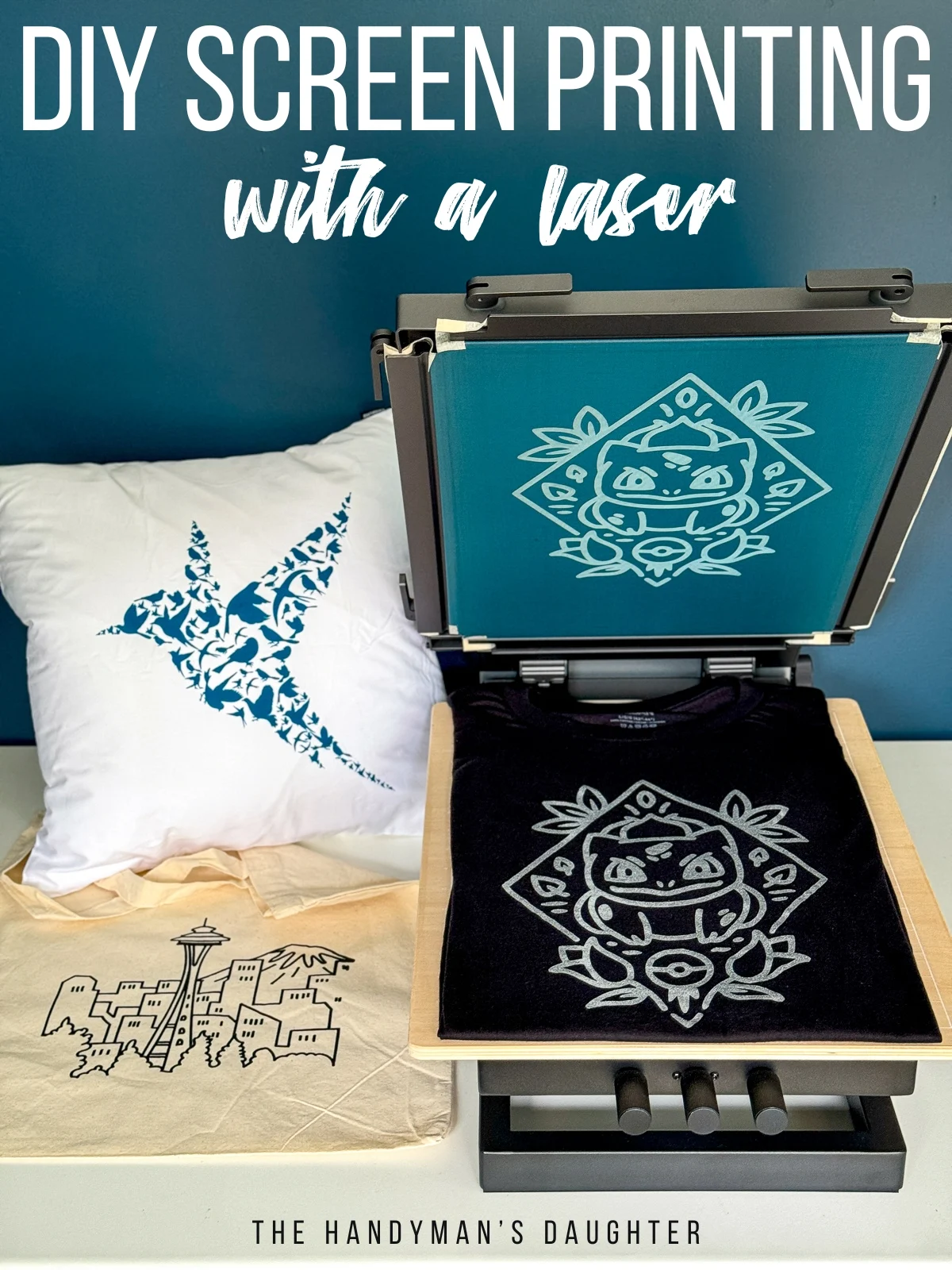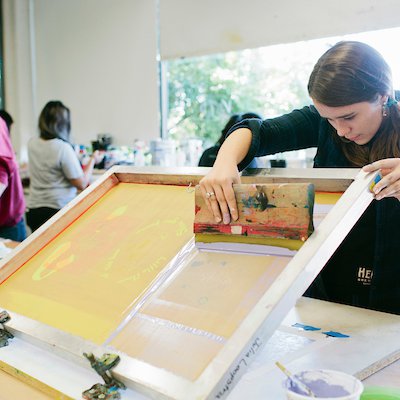ChatGPT said: 10:9 Design Company FAQs: answers to your top questions about their services
Discover the Different Kinds Of Screen Printing Techniques for Your Next Job
Screen printing uses a varied series of techniques that can improve any kind of imaginative project. From standard methods like serigraphy to modern advancements such as direct-to-garment printing, each method has its unique advantages. Specialty choices, consisting of environment-friendly and metal inks, present also more possibilities. Understanding these strategies can significantly influence the last outcome. However, the challenge hinges on choosing the most suitable method for specific requirements and preferred effects. What aspects should one take into consideration?

The Fundamentals of Screen Printing
Screen printing may appear complicated, it is fundamentally an uncomplicated process that includes moving ink via a mesh screen onto different surface areas. The method starts with the development of a pattern, which defines the style to be published. This stencil is connected to a mesh screen, usually made of polyester or nylon. As soon as the pattern remains in area, ink is related to the screen and pushed with the mesh utilizing a squeegee, causing the desired pattern being published on the underlying product.
Screen printing can be performed on a large range of substrates, consisting of paper, plastic, and fabric, making it a flexible choice for various tasks. The procedure permits intricate styles and lively colors, making it preferred in markets such as style, marketing, and art. Comprehending these essentials gears up individuals with the foundational understanding required to explore more innovative strategies in screen printing.
Typical Screen Printing Techniques
Standard screen printing techniques have actually been used for centuries, preserving the workmanship and creativity of this method. This strategy makes use of a mesh screen to transfer ink onto a substratum, such as material or paper, enabling vibrant and resilient designs. The procedure begins with developing a stencil, which blocks specific locations of the screen to control where the ink will be applied.
One popular strategy is serigraphy, commonly made use of for creative prints and minimal editions. One more is the usage of water-based inks, which are environmentally friendly and provide a soft feeling on textiles - 10:9 Design contact. Furthermore, standard methods can include hands-on printing, where artisans apply ink with a squeegee, making certain accuracy and focus to information
These strategies stay valued in the market for their tactile high quality and the special textures they produce, appealing to both consumers and makers that value the heritage of screen printing.
Digital Screen Printing Innovations
As the demand for faster manufacturing and modification in the printing industry has risen, digital screen printing technologies have actually arised as a game-changer. This technology mixes conventional screen printing methods with electronic processes, enabling quick prototyping and elaborate designs that were previously difficult to attain. One substantial development is the introduction of direct-to-garment (DTG) printing, which facilitates top quality, full-color prints on different fabrics without the need for displays. Furthermore, developments in ink solutions have resulted in environmentally friendly alternatives that maintain lively colors while lessening environmental influence. Using automated systems further enhances production, lowering labor costs and boosting precision. These advancements not just satisfy little batch orders and individualized layouts however additionally enable for quicker turn-around times, making them perfect for companies focused on meeting customer demands in a hectic market. Digital screen printing, subsequently, represents an important evolution in the domain name of printing techniques.
Specialized Screen Printing Methods
Discovering specialty screen printing techniques reveals a diverse variety of techniques that press the boundaries of imagination and functionality in the printing sector. Among these, glow-in-the-dark inks give a special visual result, making styles come alive in low-light conditions. Metal inks, known for their glittering finish, include a touch of luxury to printed materials. Another cutting-edge approach is discharge printing, which gets rid of dye from the fabric rather than adding ink, resulting in a soft, classic feeling. High-density printing creates an elevated texture externally, improving responsive interaction. Furthermore, water-based inks are gaining appeal for their vibrant colors and reduced ecological impact. Each of these specialized strategies caters to certain style needs, making it possible for brand names and musicians to produce standout items that reverberate with their target markets. By leveraging these approaches, businesses can boost their screen printing projects to new elevations, making certain unforgettable impressions.
Eco-Friendly Screen Printing Options
Green screen printing choices are acquiring traction as the sector shifts towards sustainability. Sustainable ink choices and making use of eco-friendly materials are vital components in minimizing the ecological effect of the printing process. By adopting these techniques, screen printers can add to a much more sustainable future while maintaining high-grade outcomes.
Sustainable Ink Options

Biodegradable Materials Use
As the screen printing sector progresses, the consolidation of eco-friendly materials is ending up being progressively crucial for environmentally mindful techniques. Designers and suppliers are now checking out inks and substratums made from natural, renewable energies that break down a lot more successfully than typical equivalents. These eco-friendly alternatives reduce plastic waste and minimize environmental effect, straightening with the growing demand for lasting items.
Common examples include water-based inks and organic cotton fabrics, both of which minimize hazardous chemicals and advertise eco-friendliness. Brands that embrace these products usually enhance their market appeal, bring in consumers who prioritize sustainability. As understanding of environmental problems continues to rise, the shift in the direction of eco-friendly products in screen printing is likely to acquire momentum, fostering a greener sector criterion.
Picking the Right Technique for Your Job
How can one determine one of the most appropriate screen printing method for a certain job? The decision rests on a number of factors, consisting of the material to be published on, the complexity of the design, and the wanted production quantity - 10:9 Design LLC Company. For instance, direct-to-garment printing is excellent for complex layouts with many shades, while typical screen printing stands out for bigger runs of less complex graphics
Additionally, factor to consider of the end-use of the printed thing is crucial. For outdoor applications, strategies that offer longevity and weather resistance, such as plastisol ink, may be liked. On the other hand, environmentally-conscious jobs may take advantage of water-based inks or eco-friendly materials.
Ultimately, comprehending the job's unique needs allows for an informed selection, guaranteeing both visual charm and practical longevity. By assessing design complexity, product compatibility, and production scale, one can effectively choose the most suitable screen printing technique to satisfy their job's objectives.
Regularly Asked Inquiries
What Is the Background of Screen Printing?
Screen printing stemmed in ancient China around 1000 AD, developing with Japan and Europe. By the 20th century, it ended up being prominent in industrial art and style, changing just how styles were generated and dispersed globally.

How Do I Prepare Art Work for Screen Printing?
To prepare art work for screen printing, one have to assure high resolution, use an appropriate shade mode, create different layers for each shade, and transform text to outlines, assuring compatibility with the printing procedure and wanted result.
What Materials Are Ideal for Screen Printing?
The very best materials for screen printing include high-quality inks, durable displays, and appropriate substratums like cotton, polyester, or blends. Furthermore, using ideal solution and squeegees can boost the printing process and outcomes.
Can I Evaluate Print in the house?
Yes, screen printing in your home is feasible. With the best products, setup, and strategies, people can produce top quality prints. Cautious consideration of office and tools is important for effective outcomes.
What Are Usual Mistakes in Screen Printing?
Typical errors in screen printing include inappropriate exposure times, inadequate ink consistency, misalignment of screens, inadequate cleansing of materials, and ignoring to test prints. These errors can jeopardize the top quality and accuracy of the end product.
Screen printing may seem complicated, it is fundamentally a simple process that includes transferring ink through a mesh screen onto numerous surfaces. As the need for faster production and customization in the printing industry has risen, digital screen printing advancements have actually emerged as a game-changer. Discovering specialized screen printing approaches exposes a diverse selection of methods that push the limits of creative custom sign printing thinking and performance in the printing market. The best materials for screen printing consist of top notch inks, resilient displays, and appropriate substrates like cotton, polyester, or blends (10:9 Design Screen Printing Texas). Typical mistakes in screen printing include incorrect direct exposure times, inadequate ink uniformity, misalignment of screens, insufficient cleansing of materials, and neglecting to test prints